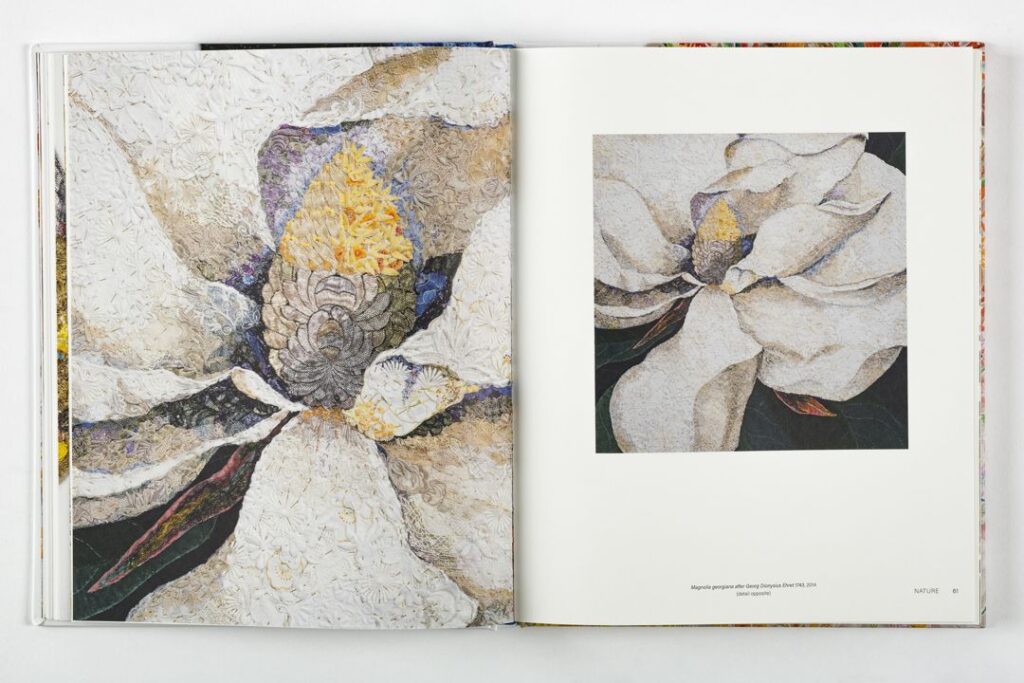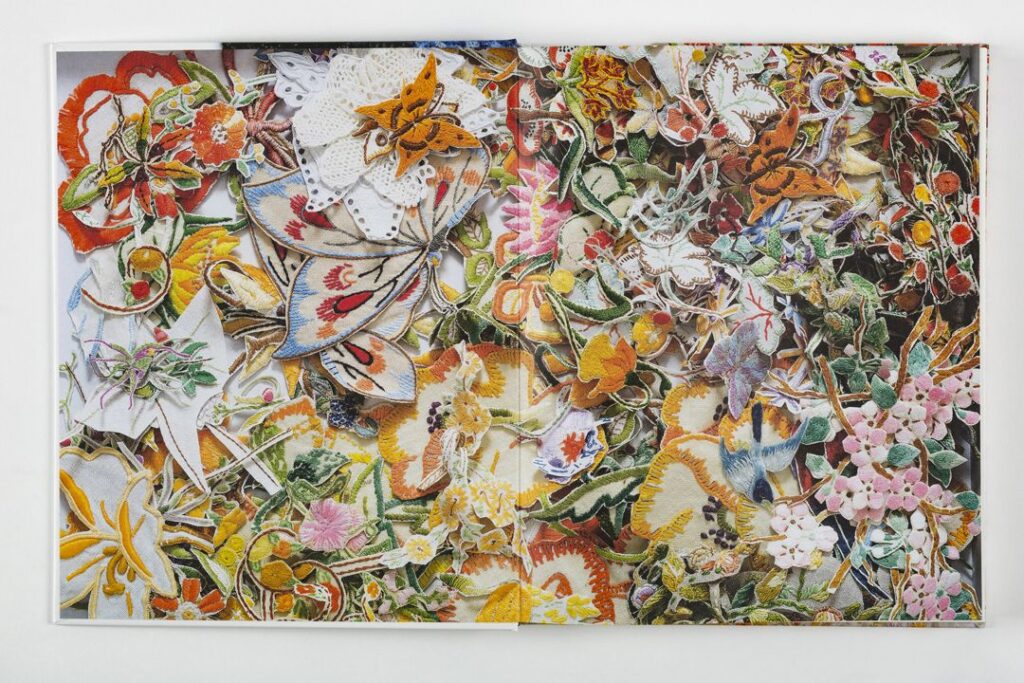
Featured: End Papers for ‘Cut and Pinned (Detail)
Louise Saxton – the ‘Embroidery Vandal’ – salvaging and reclaiming heritage craft materials.
Louise’s interest in stitch started when she was 13 or 14 years old, having been patiently taught to knit and sew her own clothes by her mother, an amazing seamstress who was always making clothes for the whole family. Louise’s mother and nana were constantly creating crafty and practical textile items, encouraging her interest in making. Creating textile art came later on, following Louise’s art school education in fine art, as a mature student she gained a BA Painting in 1991, a Post-Grad Dip, Painting in 1994 and a Masters in 2003.
Louise has seen a great evolution in her work over the last 30 years, transitioning from traditional art mediums into reclaiming materials from the home, such a vintage wallpaper, everyday patterned business envelopes and for the past twenty years, discarded and disinherited needlework. Reclaimed embroidery and lace is used to form two-dimensional relief, sculpture and installation. After two decades and having published a monograph of her textile works, the evolution is only limited by Louise’s imagination and physical ability.

There are many artists who inspire, Louise has reinterpreted historical artists’ paintings such as Elizabeth Gould, Maria Sybilla Merian, Ellis Rown, John James Audubon, Johannes Vermeer and Frida Kahlo (among others). In addition to inspiration this work has also provided the opportunity to link historically marginalised heritage-craft materials with painting.
Described as the ‘embroidery vandal’ Louise has embraced this ironic moniker, because whilst destroying functional linens, she does it with a higher purpose, saving it from obscurity, or worse, from landfill and, to give it a new life. Embroidery and lace made in past eras is on the brink of extinction and so too are the plants and animals that inspired it. Louise’s work in salvaging and reclaiming heritage craft materials raises awareness of these dual vulnerabilities and elevates the original makers and their labours, to an equal status with more traditional artforms. The materials of hand-made embroidery and lace, created with love, patience and care is continually inspiring, leaving Louise pondering the original maker.

Materials are primarily found and gifted vintage and antique domestic needlework and other linens such as doilies, tablecloths and tray-cloths. Tools are lace-pins, bridal tulle and very sharp scissors, a favourite being Klasse, fine point embroidery scissors 130mm (5 1/8”) with an “ergonomic handle design” and “precise thread (or in my case fabric) cutting”.
Louise describes her technique as “assemblage” with most of the work held together with pins, not glue. However Vliesofix (Bondaweave) and silk organza are used to stabilise the tulle, filled with countless pins, from behind in preparation for framing.
Louise typically works alone varying her work location between a small group studio to working at home. She is part of the Naarm (Melbourne) Textile Collective which holds exhibitions once or twice a year and during the exhibitions they sit and stitch (or in Louise’s case, cut & pin).

To develop your practice Louise recommends finding a studio, or space at home and to just keep making until you find the material and process that suits you best. Being part of textile or other craft groups can bring new connections and art-based relationships.
All work by Louise Saxton
Louise Saxton: Cut and Pinned is available for purchase on: The Embroidery Merchandise page
